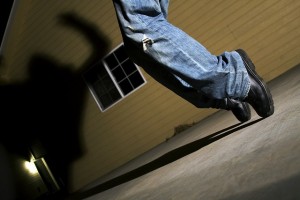
“The only thing new in dance is you.”
A friend shared that quote from an Ohio University professor years ago and it has stuck with me. Every year I find myself chuckling to myself as I listen to kids claim movements as “their” choreography when really many are sampling from the limited palette of movement they’ve witnessed, usually music videos.
The question inevitably becomes- How do I get them interested in expanding their bubble?
In grad school, I had the privilege to study under Beth Genne, a dance scholar who says music videos are our most current examples of ballet d’action, a story “ballet” told through a collaboration of arts although not necessarily in the style of dance known as ballet. I don’t think all music videos support the comparison but the style of video made popular by Michael Jackson in the “Beat It” and “Thriller” era do, just as Genne discusses in her writings.
When working with kids, one particular challenge is inspiring them to see the benefit and value of learning about what came before- even, or perhaps especially, if it occurred in black and white.
Who better to draw them in and inspire rich dialogues about many topics in dance than Michael Jackson? Who can resist Michael Jackson’s anthems of 1980s American culture, his powerful use of film to bolster his hugely successful pop songs, and the influence he’s had on music and videos of today.
The “King of Pop” alone illustrates how the past influences the future in a way kids can easily follow and discuss. The beauty of this example is that you can trace influences forward as well as back, and this is how dance history can be introduced.
Here’s how you can expand the conversation:
Check out Nichelle’s tribute to Michael Jackson from 2009.
The following categories introduce conversations on the dance topics based on but not limited to “Beat It” and “Black and White”. Included in the categories are links to other Dance Advantage articles that may also offer additional insight or points of view.
The Development of Theatrical Dance
- Court Dance to Social Dance: King Louis XIV and his role in the development of dance training
- Ballet d’action: a continued look at the function of dance from social dance to performance
- Classic Confusion: Understanding Labels in Dance
- Where theatrical dance exists: theatres, vaudeville, Broadway, Hollywood, TV/Film, Concert stages, Commercial dance settings
- History Moves: Connecting Student Choreography to History’s Prime Movers
The Development of Dance Technique and Performance Philosophy
- Fred Astaire, Bob Fosse, and their influence on Michael Jackson’s dancing and performance style.
- The similarities and differences in commercial and concert dance forms
- The Pros and Cons of Dance Crossover- Crossing Genres in the Field of Dance
Presenting Dance and Relating Topics
- Dance in film: using dance to propel the narrative story.
- Dance in film: the directing and choreographic choices of such artists as Fred Astaire, Gene Kelly, Jerome Robbins, and more.
- Dance on Camera: presenting dance in ways not possible in a traditional theatre setting.
- Dance on Camera: introducing the work of artists such as Maya Deren, Charles Atlas, and more.
- Sharing Dance via Youtube and Social Media
- Are You Followin’ Me? How to get Twitter to Work for You
- Influence versus Improper Use: Intellectual Property and Accessing Rights
Dance Ethnography
- Documenting Dance: Photos and film as source materials.
- Documenting People: Understanding cultures through performance and rituals
- Globalization: Blurring boundaries and fusing ideas
- Dance Diversity: African-American Community Outreach
Where might this lead you?
Heather Vaughan-Southard MFA, is a choreographer, dance educator, and performer based in Michigan. She currently directs the dance program at the Everett High School Visual and Performing Arts Magnet in Lansing. With the philosophy of teaching dance as a liberal art, Ms. Vaughan-Southard collaborates with numerous arts and education organizations throughout the state. She has danced professionally in Chicago, Detroit, Los Angeles, and New York and has performed works by Mia Michaels, Lar Lubovitch, Donald McKayle, Billy Siegenfeld, Alexandra Beller, Debra Levasseur-Lottman, and Bob Fosse. As a choreographer, her work has been credited by the Los Angeles Times for “creating heat.” She has recently choreographed for the dance programs at Michigan State University, Grand Valley State University, Lansing Community College and is the former dance professor at Albion College. She is a regular guest artist and blogger for Dance in the Annex, an innovative dance community in Grand Rapids. Heather received her MFA in Dance from the University of Michigan, BFA in Dance from Western Michigan University and K-12 certification in Dance from Wayne State University. Read Heather’s posts.

